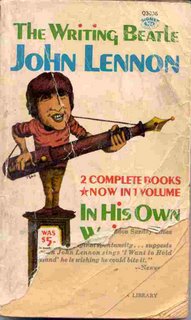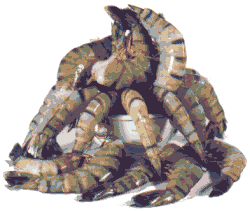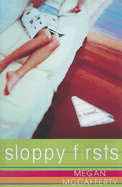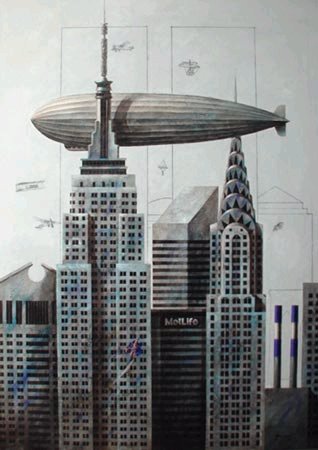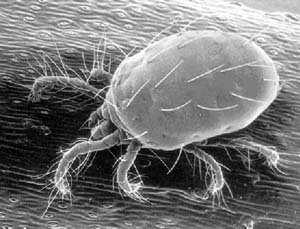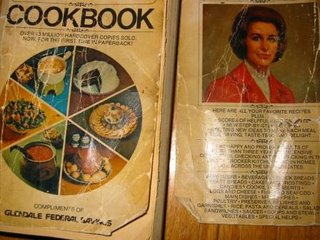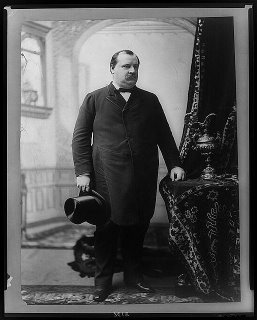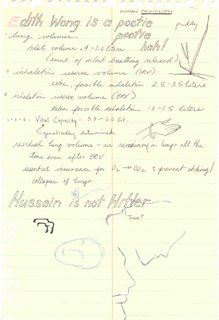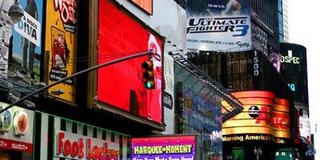
My lumpy briefcase and I are back from Manhattan, having survived several embarrassing celebrity sightings, an overwhelming (and beautiful) six course dinner in a kaiseki-style Japanese restaurant, two American Airlines snack boxes, the apparent death of the whole concept of "boutique hotel," amazing insect-like swarms of tourists stirred by the first warm week of spring, and the usual taxi hi-jinx. In some sense, it was a typical trip to Manhattan, especially when one uses a 50lb briefcase as ballast and is wearing high heels with less aplomb and dignity than a 6'2" transvestite teetering dangerously down the Castro Street hill.
Perhaps it's best that I'm so celebrity-illiterate these days, because during all of my celebrity non-sightings, my bulky briefcase was in prominent attendance, conspicuously overstuffed and frumpy. You can't distance yourself from your briefcase the way you can from, say, a person you don't want to be visually associated with; there's no way of pretending that it's not with you or that it's something that stuck to your shoe as you made your way down a crowded sidewalk.
There I was in the Paramount elevator, sweaty and disheveled after walking the last 7 blocks to the hotel because the cab driver threatened me that it'd take an hour to head uptown from 39th to 46th on 8th Avenue. "They're short blocks," he said. "You can walk." He was pleading. Midtown was a mess at 10:30pm on a Tuesday night. The sidewalks were aswarm with theater-goers from out of town and the streets that weren't blocked off were jammed with taxis, limos, delivery trucks, and whoever was insane enough to approach Midtown in a car. Everyone was laying on their horns, enough so that cops were shouting through megaphones that any more horn-blowing would be cited. So I got out of the cab, tipped the driver handsomely for the foreshortened journey because I'm prisoner to liberal guilt, and started up 8th with my WWW13 backpack, accursed briefcase, and a plastic bag containing vital magazines and the remnants of my SFO-JFK snack box.
It was not a look I'd deliberately cultivate: part nerd, part bag lady, part sweaty crazy person.
By the time I was in the Paramount's elevator, awash in blue light, I knew there was something up on 46th Street. There were Klieg lights in front of the Paramount and even in my wildest delusions of grandeur, I couldn't pretend they were for me. And these two guys in the elevator: definitely well-known actors. I could tell they were thinking I was respecting their privacy by not saying anything to them. In truth, I just recognized them as members of the celebrity class. I had no idea who they were. "Julia," said the one with the Johnny Depp hairstyle, "Julia looks like she's put on some weight." The other defended Ms. Roberts: "It's been since the twins." Then the first countered, "Don't you think so-and-so looks like a young Julia?"
It was a conversation intended to impress.
The two men bade me and my briefcase farewell when I shambled off on the 8th floor, desperate to dump my ad hoc luggage on a chair. They were actually quite friendly, but I don't know who they were. Assignment to self: Read
People once in awhile. It won't hurt you. You can skip the heart-warming articles about personal triumph over adversity and just study the celebrity gossip, however briefly. This could've been a moment.
The second brush with celebrity was on the packed flight on the way home. I was seated next to a man reading
Esquire, one of my own usual airplane magazines. I admired his sleek briefcase and self-consciously kicked mine (now even more unattractively lumpy, given that I'd stowed an orange in it) underneath the seat in front of us.
The flight started poorly. A 9 month old baby was seated in the row in front of us in the care of her Manhattanite mom, who had clearly forgotten to sedate her offspring. The baby was squawling. The baby was howling. The baby was sputtering green peas over the back of the seat. The man next me speculated archly that the baby was irritated because her upgrade to Business Class had not gone through. I suspected we'd all tried. The woman's husband was the only one who'd made it to Business. So there we were, and I was feeling more claustrophobic than normal.
It seemed like more people than usual were hanging out by us, probably because we were so proximate to the lavatory. Several of these aisle-standers seemed to squint with particular vigor at my seatmate.
The baby continued to squawl. I begin to mutter darkly, under my breath, and scowl.
By midflight though, the baby had quieted and was gumming contentedly on the seat back. (Note to self: don't put head on seat back from now on.) We were all in a happier frame of mind. The man next to me had finished his
Esquire. He offered it to me, and I was happy to take it. In exchange, I gave him my
Details and we chatted briefly how
stale the back page gay or not humor had become and how uneven the writing was. Better now that they'd made Augusten Burroughs a regular, but still bad. It does have the most attractive models, however. My seatmate was well acquainted with the publishing industry, but this wasn't too surprising: it was a non-stop coast-to-coast flight from New York. After he'd finished
Details, I offered him my
New Yorker. It was clear we had a solid overlap on our magazine preferences, except he'd clearly incorporated much of the sense of style conveyed by these glossies and I most certainly hadn't.
I gave the lumpy Briggs and Riley another guilty shove further under the seat with my worn out Bruno Maglis.
Why do I have to look like this? Why is it that I can start with great raw material and emerge looking like I shop at K-Mart?

It wasn't until I got home, and put two and two together (using a key clue, a comment made by a fawning woman who stopped him on the way off the plane and said, "I watch you every week on Bravo"), that I realized my lumpy briefcase and I were crumbling crackers and spreading cheese surrogate on ourselves in front of
one of the cast members of Queer Eye. I knew he looked familiar. And yes, when I read his online bio, he'd been a contributing editor for
Esquire.
It's just too humiliating. I can't imagine what he thought. At least we read the same magazines. I do wonder where he got his briefcase, although I imagine that one keeps one's briefcase looking sleek by not stuffing oranges, ten dollars' worth of loose change, and a dozen electrical cords in it.
But I need this stuff.
When I travel by myself, I tend to live off the contents of the American Airlines snack box for much of the duration of my travels, supplemented if necessary by pillow chocolates (the little squares the turn-down service puts on your pillow), convenience store sandwiches, and vending machine peanut-butter crackers. The simple story is: I hate going to restaurants alone. I just can't pretend to be comfortable.

Because I was with a colleague -- a colleague who does his food research -- I actually ate dinner that included a course described by reviewers as "an amuse bouche of sea urchin and raw quail egg." An amuse bouche. I rarely think of myself and amuse bouche in the same paragraph or find an amuse bouche in my mouth. I'd be hard-pressed to even pronounce it.
This was a serious restaurant; the food was rated 27/30 in Zagat's and was lovely to behold.
But once again, I embarrassed myself. I chugged along through 3 courses, eating minor works of art that required I suspend thinking about what I was eating and focus on texture and subtleties of taste. I was doing well. I won't bore you with the details.
Well-known food writers capture this sort of stuff much better than I do. And they can type "amuse bouche" or "the king of crustaceans" with a straight face. I could never do that.
Nor, apparently, could I make it through this seeming endless presentation of delicacies without thinking UNITED AIRLINES BENTO BOX. Yes. There it was. Some bit of flavor was just a little too evocative. And once I started thinking UNITED AIRLINES BENTO BOX, all bets were off. That's all I could think about.
On our way back from Bangkok, Business Class, seated in the most comfortable place on a 747, the front row of the upper deck, I was stupid enough to press on with the Bento Box. The flight attendant did everything she could to warn me.
Flight Attendant: "What can I bring you?" [she listed two benign-sounding entrees, one a variation of chicken, the other of beef.]
Me: "I think I'd like the bento box."
Flight Attendant: "I don't think we have any of those on this flight."
Me: "Oh. That's disappointing. I was looking forward to it."
Flight Attendant: "Oh, wait a minute. Let me check. I think I might've seen *one* of them."
One of them. That should've tipped me off. The last one. A leftover. The remaining bento box. From when? From yesterday's flight from Narita? From two weeks ago? Something someone found at the back of the refrigerated compartment, in the darkness, behind something else that got thrown away because it had green scuzz growing on it?
Sure enough, she found me my bento box. And I ate it, thinking all the while, "this tastes a little off. Why am I eating this?" But each business class seat represented 150,000 painful miles of previous travel, and I was not going to ignore my meal. Travelers around me were cutting into their filets. I was maneuvering some rubbery-hard raw fish between my chopsticks and into my mouth. I will eat this hard earned sashimi if it kills me.
Stupid!
Yes. I did get sick. And, no, I haven't eaten very much in the way of raw fish since. Oh, I've had occasional sushi dinners, but I stick to the wimpy Americanized spider rolls. California rolls. Rock 'n' rolls. Maybe after another decade elapses, I'll forget the BENTO BOX, but for now I have hard time suppressing the memory.
To my credit, I did make it through jewel-like presentation after jewel-like presentation, but I was beginning to fill up, and the discomfort of being too full, coupled with one too many crustacean, brought BENTO BOX memories welling to the surface. I had to skip several consecutive courses. It's quite embarrassing in this rarified atmosphere to have a full plate go back to the chef. There's no strategy for concealing it either: you can't push something so carefully organized around on your plate and make it look like you've done anything other than deface it.
The dessert, however, was one of the best things I've ever eaten in my life, a grapefruit jelly with a quiet layer of frothy cream. It locked the BENTO BOX back in the service cart. I ate the entire tiny thing and would've had seconds if they let me.
One last bit about Manhattan: It used to be that the idea of staying in a "boutique hotel" was tragically hip. You could even be somewhere like I was, in the theater district in Midtown, spitting distance from Scientology's Manhattan headquarters, a place just swarming with Midwestern tourists in track suits and running shoes with fanny packs strapped around their ample middles, and you could walk by the model-pretty doormen into the lobby, and you'd be transported to a sleek world that throbbed to a soundtrack of techno and shone with undeniable hipness. Everything'd be monochromatic, matte, and subtle. The people would be slender, black-clad, and have good haircuts. There'd be the touches, the unexpected, the metal beaded doorways, the zinc fixtures, a single protea flower, couches beamed directly from the future. And you'd be away from the Iowans on a spree. Expedia, Hotels.com, and their ilk have changed all that. It's just as easy to know about a boutique hotel and stay there as it is to know about the nearest Days Inn, and it might be just as cheap to stay there.
Oh well. At least me and my briefcase fit right in. In fact, in the newly-colonized Paramount, we even looked good.
 For the last week or so -- ever since I came back from New York -- the most inane of Simon and Garfunkel's musical offerings has been flitting through my mind. Delicately flitting, but flitting nonetheless. At the Zoo, I think it's called, and it starts something like this: "It's a light and tumble journey from the East Side to the Park, just a fine and fancy ramble to the zoo." There's more about the lyricist's transit adventure, which inexplicably involves no crazy people or auto-conversationalists. Then in an unbearable burst of poetic liberty, Paul Simon goes on a tear about the insincerity of giraffes, the reactionary nature of zebras, pigeons plotting in secrecy, and hamsters turning on frequently.
For the last week or so -- ever since I came back from New York -- the most inane of Simon and Garfunkel's musical offerings has been flitting through my mind. Delicately flitting, but flitting nonetheless. At the Zoo, I think it's called, and it starts something like this: "It's a light and tumble journey from the East Side to the Park, just a fine and fancy ramble to the zoo." There's more about the lyricist's transit adventure, which inexplicably involves no crazy people or auto-conversationalists. Then in an unbearable burst of poetic liberty, Paul Simon goes on a tear about the insincerity of giraffes, the reactionary nature of zebras, pigeons plotting in secrecy, and hamsters turning on frequently. I thought to myself, "Maybe I should ask to be let off the train here, on the wrong side of the bay. Just like those unnerved airplane passengers that make the plane taxi back to the gate so they can get off. Then I'd be off BART and I could walk home. But there's the bridge. That wouldn't be safe either, because surely whatever's closing the subway would have some bearing on what's going on above it. Yeah. I could walk home... by going around the end of the bay! I'd get home by tomorrow morning if I didn't dawdle." By the time I was through ruminating about how I'd get home if I didn't take BART and, for safety's sake, didn't take the bridge either, I'd almost missed the 24th Street station, where I'm supposed to de-BART. The long escalator was out of service, but besides that, everything appeared to be normal top-side.
I thought to myself, "Maybe I should ask to be let off the train here, on the wrong side of the bay. Just like those unnerved airplane passengers that make the plane taxi back to the gate so they can get off. Then I'd be off BART and I could walk home. But there's the bridge. That wouldn't be safe either, because surely whatever's closing the subway would have some bearing on what's going on above it. Yeah. I could walk home... by going around the end of the bay! I'd get home by tomorrow morning if I didn't dawdle." By the time I was through ruminating about how I'd get home if I didn't take BART and, for safety's sake, didn't take the bridge either, I'd almost missed the 24th Street station, where I'm supposed to de-BART. The long escalator was out of service, but besides that, everything appeared to be normal top-side. I walked my zig-zag route to 22nd Street, intercepting 22nd in time to check out The Green Cross. Sure enough, it was gone. Just an empty storefront. It's sad. I'm not sure whether the neighbors' hysteria ("The Children(TM)!") was real or a disingenuous attempt to keep their rising property values high. The children didn't walk by The Green Cross so much as they were chauffered past it in Mommy's Range Rover; I doubt they gave it a second look unless their folks told them not to. We'd gone to several of the Appeals Board hearings, and I was convinced that Kevin, the GC's owner, was sincere in his willingness to work with the neighbors to make his medical cannibus dispensary into a neighborhood business. No such luck. So instead of The Green Cross, I'll probably see another nail salon next time I walk by. Or a bar.
I walked my zig-zag route to 22nd Street, intercepting 22nd in time to check out The Green Cross. Sure enough, it was gone. Just an empty storefront. It's sad. I'm not sure whether the neighbors' hysteria ("The Children(TM)!") was real or a disingenuous attempt to keep their rising property values high. The children didn't walk by The Green Cross so much as they were chauffered past it in Mommy's Range Rover; I doubt they gave it a second look unless their folks told them not to. We'd gone to several of the Appeals Board hearings, and I was convinced that Kevin, the GC's owner, was sincere in his willingness to work with the neighbors to make his medical cannibus dispensary into a neighborhood business. No such luck. So instead of The Green Cross, I'll probably see another nail salon next time I walk by. Or a bar.


